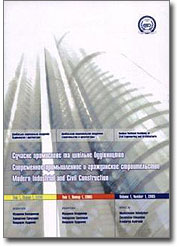A Reduction of Metal Consumption of Construction Machine Parts Based on their Strength Analysis in APM FEM Environment
Abstract: The paper discusses the issue of compliance of the results obtained in the strength calculations using computer-aided design systems, traditional techniques described in the educational literature, for example, traverse hook suspension bridge crane with a capacity of 20 tons. The possibility of optimizing the design parameters of parts of construction machines, based on their strength analysis. Comparison of the results of strength calculations performed in the APM FEM environment and traditional design techniques showed the possibility of optimizing the part by reducing its metal consumption without deteriorating its performance and reliability. In particular, for the traverse of the hook suspension with a slight increase in stresses and a decrease in the safety margin, it was possible to reduce the metal intensity by more than 40 %. However, despite the fact that in the strength analysis using APM FEM, in both cases, the calculations were carried out before reaching their convergence within 5…10 %, it cannot be said that it guarantees 100 % adequacy of the obtained results, in order to establish them experimental studies.
Keywords: strength analysis, computer-aided design, stress, safety factor, hook suspension, traverse.
Pages: 75-80.
For citation:
For citation: Datsenko, V. M. A Reduction of Metal Consumption of Construction Machine Parts Based on their Strength Analysis in APM FEM Environment. – Text : electronic. – In: <em>Modern Industrial and Civil Construction</em>. – 2019. – Vol. 15, N 2. – Р. 75-80. – URL: https://donnasa.ru/publish_house/journals/spgs/2019-2/03_datsenko.pdf (date of access: 07.03.2025). – ISSN 1993-3495.

Vol. 15, N 2 (2019)
Journal: Modern Industrial and Civil Construction
Publish house: Donbas National Academy of Civil Engineering and Architecture
Journal: Modern Industrial and Civil Construction
Publish house: Donbas National Academy of Civil Engineering and Architecture
